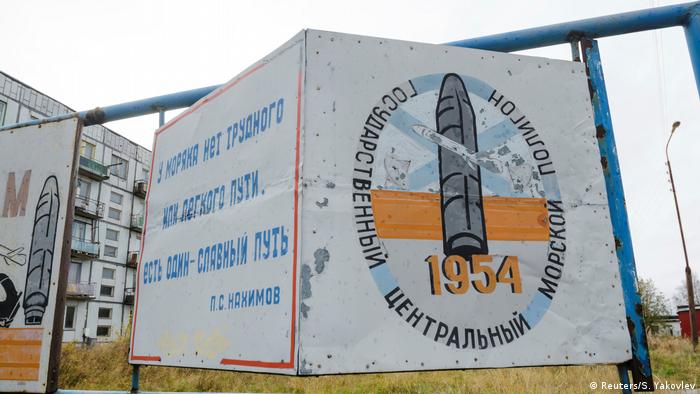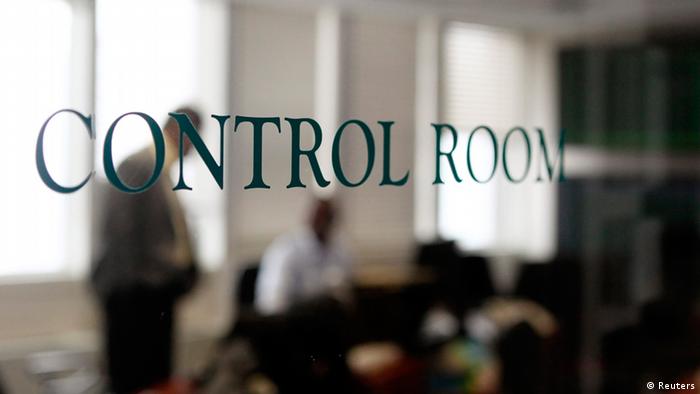In an Explosion in North-West Russia radiation was set free. And suddenly measuring delivered stations of international monitoring system data from Russia. Experts do not believe in coincidence.

Fears are growing that Russian authorities wanted the true extent of the Explosion on the Njonoksa-military site near Severodvinsk, on 8. August cover up. Now as it turned out, had been in Russia the measurement stations of the international nuclear-test monitoring system (IMS). The Commission reported with its headquarters in Vienna, the try with the implementation of the Treaty on the comprehensive Nuclear test ban (CTBTO) is concerned. The Russian authorities said then that there had been connection problems with the measurement stations. Later, Deputy foreign Minister Sergei Ryabkov claimed that the Transmission of data from the measuring stations to the CTBTO was “completely voluntary”.
Russia is one of 184 countries that have signed the Treaty for the prohibition of nuclear tests. In contrast to the USA, Russia has ratified the Treaty. In power, he could not, however, occur in the past, it have not yet ratified other countries, including North Korea and Iran. Nevertheless, Moscow has concluded with the CTBTO an agreement about the financing of the measuring stations in Russia. For the operation of the stations, the Russian defense Ministry is responsible. The of the stations the measured radiation values are transmitted directly to the CTBTO, as well as to all members of the organization.
Measuring stations simply shut down?
The suspicion that there might be a connection between the Explosion at the test site, and the failure of measuring stations, expressed as the first CTBTO Executive Secretary Lassina Zerbo. On Twitter, he published a map that shows the spread of the radioactive cloud in the days after the Explosion. They moved mainly on the Russian territory.
In Russia, there are a total of seven measurement stations in the framework of the contract with the CTBTO. Had been out of the stations in Dubna, and Kirov region in the European part of Russia, as well as in the East of the country in Bilibino, Salesowo and Peleduj. “Of course it is suspicious, if only the stations are switched off, could the increase in radiation to measure,” said Jeffrey Lewis from the James Martin Center. Connection have given it to only to the remote stations in the far East. According to the expert, there was there is no way to capture the increased radiation.
“This is not a second Chernobyl”
Michael Schöppner from the Vienna Institute for safety and risk Sciences (ISR), says that the fact that four or five of the stations were down, one could take as an indication that the targeted stations were turned off, the air masses from the Region of Severodvinsk were able to measure. Two of the stations – provide the in Bilibino and Peleduj – meanwhile back data to Vienna.

No more data to Vienna: monitoring headquarters of the CTBTO in Vienna
After the Explosion, the Russian meteorological service has measured an increase of the radioactive radiation by a factor of 16. Schöppner, working with the CTBTO, together, says, however, she was harmless. “If the data on the maximum dose of two micro-sievert per hour, the votes, that means no health risk. This is less than on a commercial flight per hour of flight time across the Atlantic,” he told DW. “This is definitely not a second Chernobyl.”
Tracks should be blurred?
Anne Pellegrino, from the James Martin Center for Nonproliferation Studies at the Middlebury Institute at Monterey, California, which deals with arms control, said the DW in this context: “it May be, Russia has not stopped the transmission of data, in order for other States to potentially important information about the Njonoksa radioactivity.” Likely to be continue to been data is measured, without being sent to the international processing centre in Vienna, suspected Pellegrino.
Schöppner is that behind every unit can be, the radioactive elements used, a “fingerprint”. This wool hide Moscow. “If an expert knows which isotopes were measured in the ratio, he can say, what kind of has acted from a nuclear accident, if a certain drive, a reactor or a certain type of fissile material in the accident was involved,” says Schöppner.
If a cruise missile was tested at the military test site in Severodvinsk, the Russian authorities do not give information. Information from the Russian nuclear center in Sarov is no indication whether the Explosion is a missile of type “Burewestnik”, which is driven by a “Mini-reactor”, or weapons with a thermoelectric radioisotope generator (RTG), a so-called “nuclear battery” has acted. The experts at the James Martin center, however, expect a failed Test with a Burewestnik cruise missile, whose NATO Codename is “Skyfall” is.